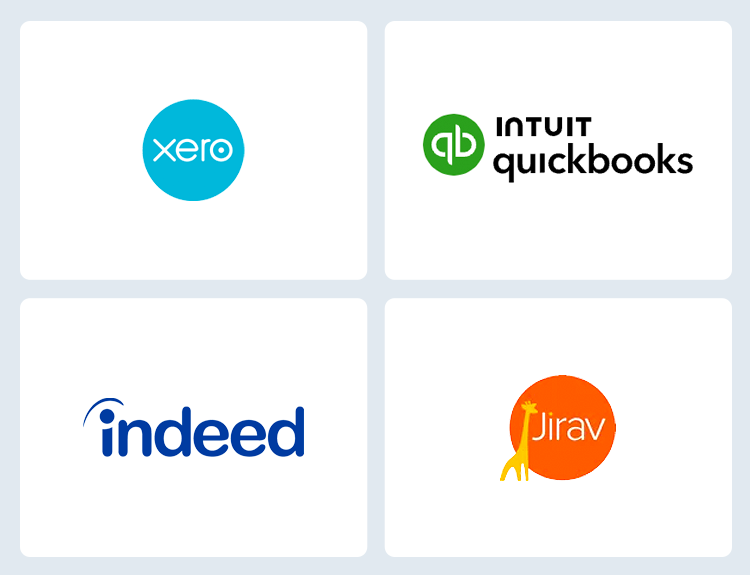
Hiring Solutions For Finding New Employees
Streamline your hiring process with our tailored solutions:
- Screen candidates and make informed decisions with Paychex Flex®
- Discover talent with AI-powered recruiting
- Manage recruiting to onboarding with our comprehensive applicant tracking system
Hiring Solutions and Service Options To Help Make Hiring More Efficient
Benefits of Using Paychex Hiring Tools and Services
-
All-in-One Efficiency and Automation
All-in-One Efficiency and Automation
Reduce your time-consuming processes and multiple logins with our one platform that hosts all of your hiring tools.

-
Candidate Approved Hiring Experience
Candidate Approved Hiring Experience
User-friendly platforms and applications make recruitment and onboarding faster and smoother for both employers and candidates.

-
Technology and Integration
Technology and Integration
Experience cutting-edge technology with seamless integration for an optimized, cohesive process.

-
Comprehensive Management
Comprehensive Management
Easily manage each stage of hiring, from sourcing ideal candidates to completing employment documentation.

Find the Right Hiring Tools for Your Business

We’ll Deliver a Tailored Plan and Pricing For Your Hiring Needs.

Receive the Hiring Help You Need and Stop Wasting Time Endlessly Scrolling For the Perfect Candidate.
Seamless Integrations To Streamline Hiring
Connect and share data through Paychex Flex® integrations with job boards like LinkedIn®, JobTarget®, Indeed®, and ZipRecruiter®. Instantly find your next employee with Paychex Recruiting Copilot, in partnership with Findem, our AI-powered solution delivering a customized shortlist of potential candidates.

Pair Hiring Tools With Other Paychex Services To Save Even More Time
Looking to provide more for your current staff? Explore our additional solutions, customizable and easy to integrate with any package you choose.

Learning Management System
Support your new hires’ training and onboarding with courses designed to improve productivity and retention.

Professional Employer Organization (PEO)
If your small business needs hands-on support, a Professional Employer Organization (PEO) can provide the full-service HR you need to hire, onboard, and remain compliant.

HR Consulting
Receive advice tailored to your specific hiring needs. With proactive guidance, you can strengthen your talent acquisition process before issues arise.

Employee Engagement
Drive collaboration, motivation, and productivity with our employee engagement, talent, and performance management tool.

Lifestyle Benefits
Offer employees a marketplace of products and services for healthier, happier lives—at no extra cost to you.
Explore Hiring Content
Hiring FAQs
-
What Is the Difference Between Hiring Process and Recruitment Processes?
What Is the Difference Between Hiring Process and Recruitment Processes?
The hiring process focuses on filling current vacancies, while the recruitment process is an ongoing effort to attract talent for long-term or future business needs.
-
What Is a Hiring Service?
What Is a Hiring Service?
A hiring service is a third-party provider that helps businesses recruit and hire employees.
-
How Can I Streamline My Hiring Process?
How Can I Streamline My Hiring Process?
Use HR hiring software or solutions to simplify candidate searches, interviews, and the overall hiring process.
-
What Is a Hiring Solution?
What Is a Hiring Solution?
A hiring solution streamlines the hiring process to help you find the best-fit candidates. For example, Paychex Recruiting Copilot, in partnership with Findem, uses AI to simplify hiring.
-
What Is Strategic Hiring?
What Is Strategic Hiring?
Strategic hiring focuses on recruiting employees who align with your business’s long-term goals. Paychex HR business partners can guide you in making informed, strategic hiring decisions.
-
Is Paychex’s Hiring Solution Suitable for Small Businesses?
Is Paychex’s Hiring Solution Suitable for Small Businesses?
Yes, Paychex offers customizable hiring solutions for businesses of all sizes, with flexibility to add tools as your needs grow.








